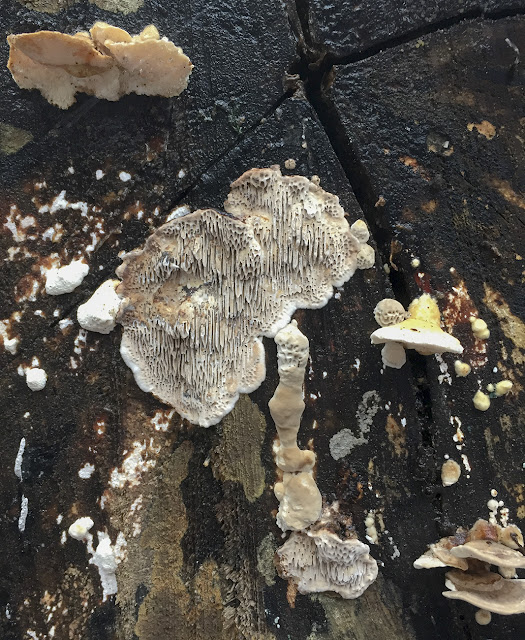 |
| Beech Walk, High Elms Country Park, 2 January 2016. |
The tone of winter walks is often dictated by the weather, and I have been on a few around High Elms in the rain. On this, day, though, the few members of the Orpington Field Club who braved the weather forecast (heavy rain) were rewarded with just occasional light drizzle. Still not all that cheerful, though! It was very muddy, mostly more so than this photo suggests.
Here's another shot of the Beech Walk, this time from the top, looking more imposing and, deceptively, even less muddy.
 |
| Beech Walk, High Elms Country Park, 2 January 2016. |
There are two trackways because one is for pedestrians, and the other is a bridleway, for horses and bicycles. They are about the same quality underfoot. The reason for keeping to the pedestrian side is exactly the same as the reason for keeping to the pavement in urban streets.
High speed downhill cycling is discouraged by those half-barriers.
 |
| Burnt Gorse from the low end, High Elms Country Park, 2 January 2016. |
This field is called Burnt Gorse, from a name found on an old tithe map. It is cut well back in autumn to maintain its open character. As you can see, a series of electricity power pylons reach above it; the same series that I photographed on the
far side of the hill in September. Most of the High Elms estate is woodland surrounding a golf course, but there are also a few open areas like this.
The wires make a loud hissing or buzzing noise. As we entered at the low end of the field, it sounded very like a stream rushing along nearby - but this is a dry valley.
 |
| Hazel shrub, Corylus avellana, with catkins. Burnt Gorse, High Elms Country Park, 2 January 2016. |
Hazels are already full of their catkins and some are shedding pollen. They are normally early starters, but this winter's warm weather may have brought them on too soon.
There are still a few fungi around.
 |
| Unidentified fungus on felled Scots Pine. High Elms Country Park, 2 January 2016. |
This one, which looks almost like part of a honeycomb, has proved to be hard to identify. It might be something rare, or it might be something quite common growing in an unusual form.





No comments:
Post a Comment